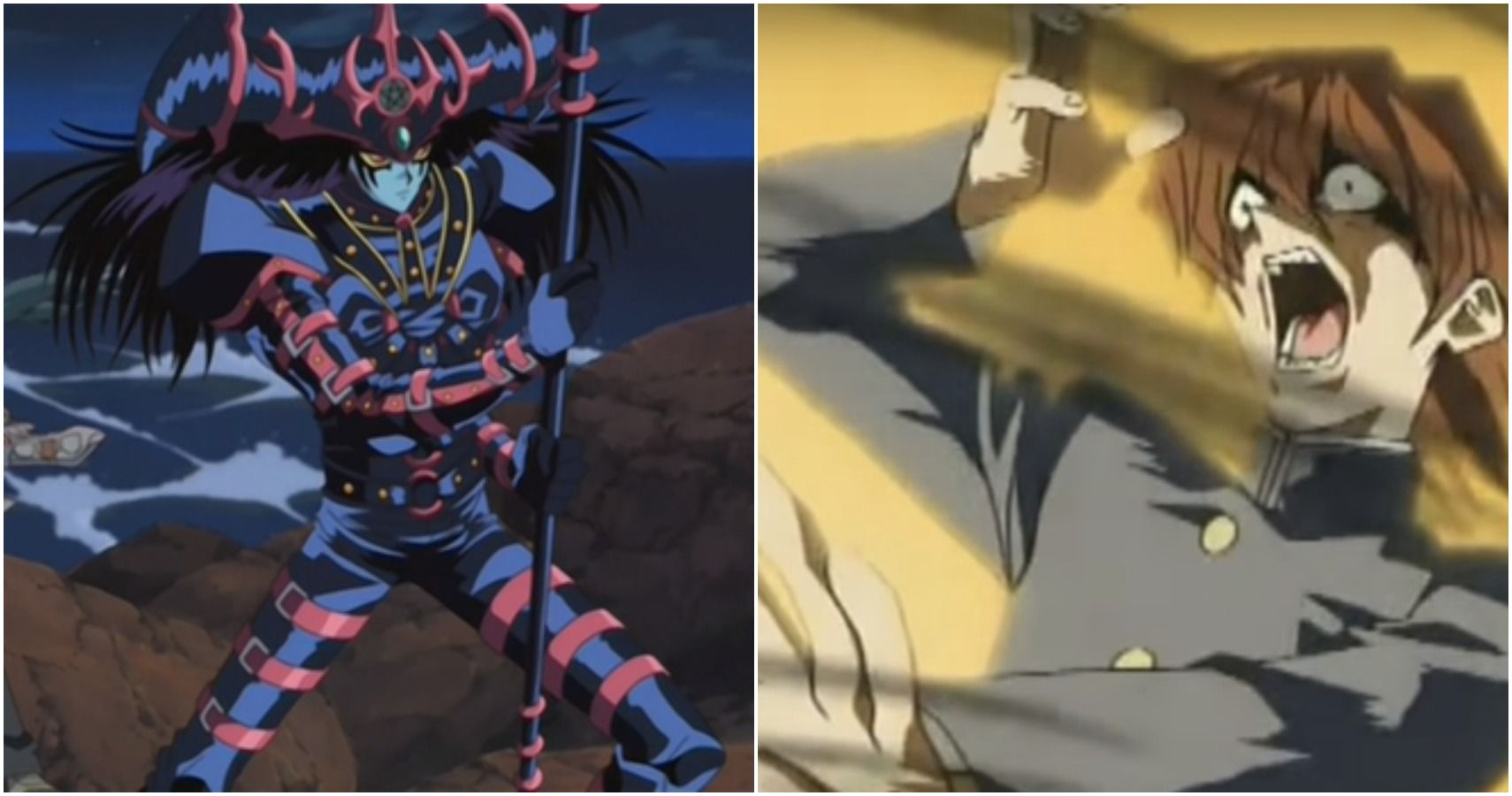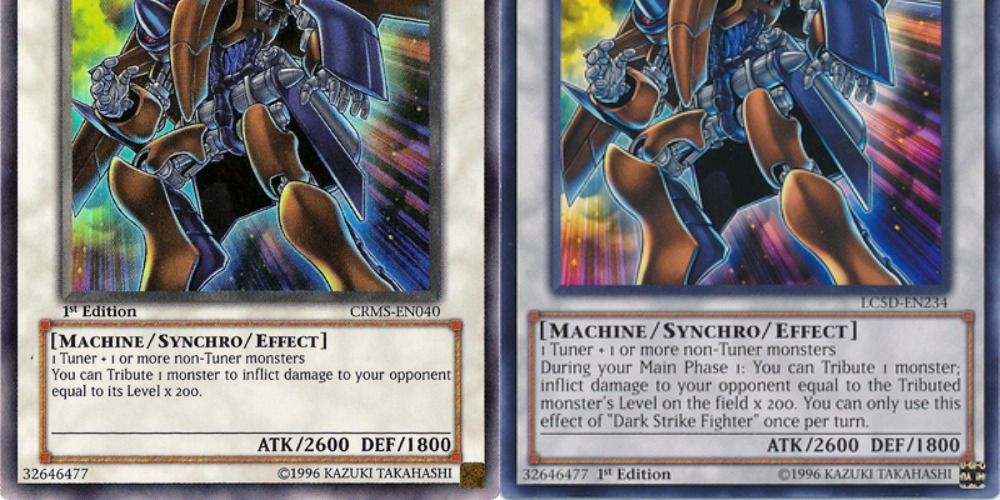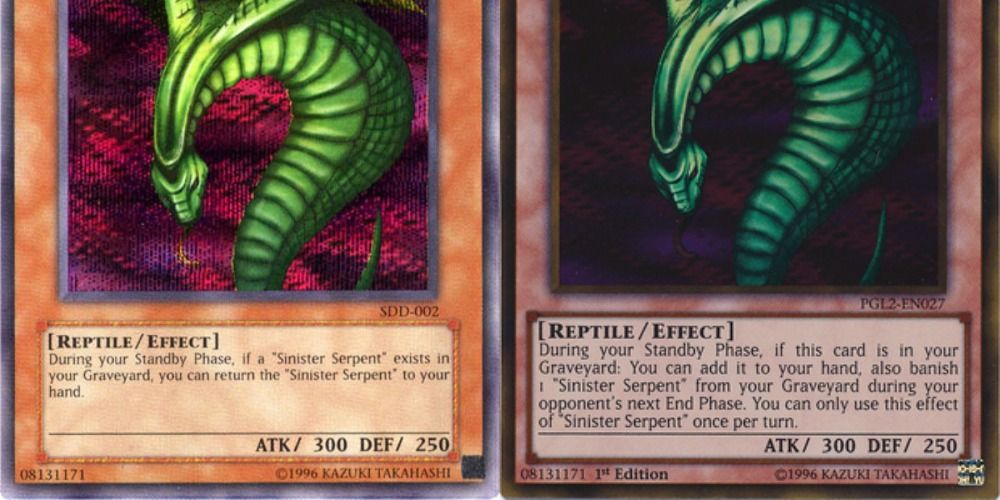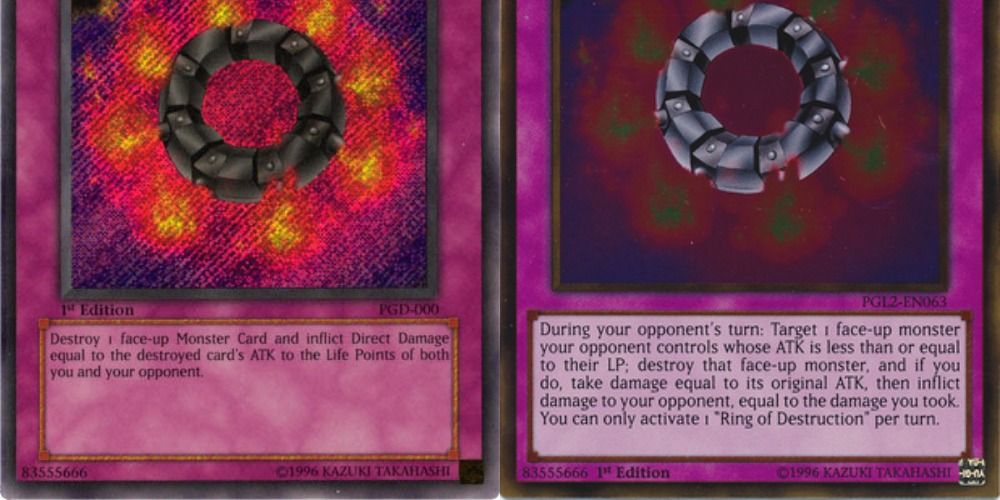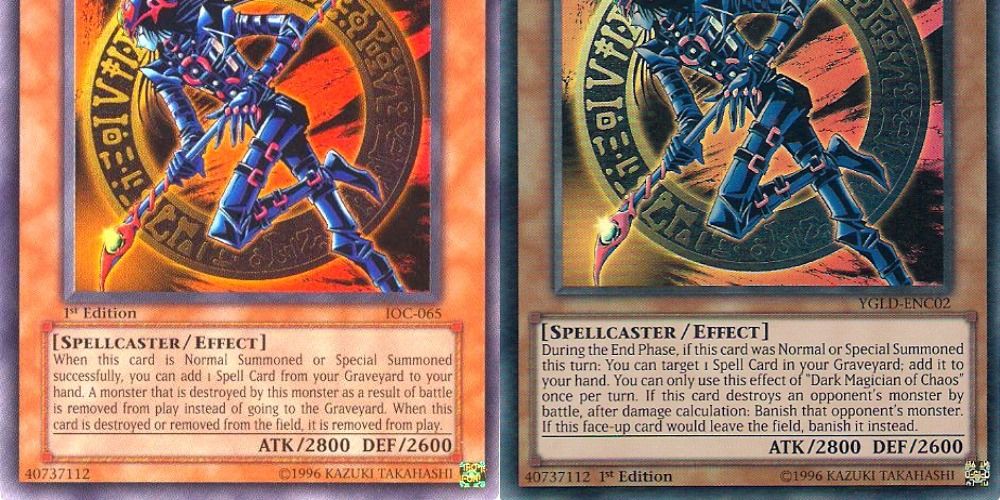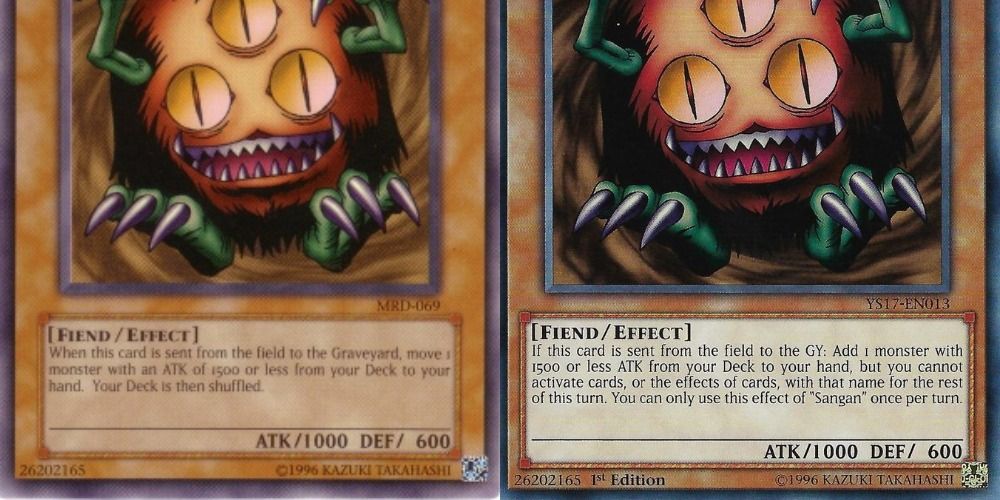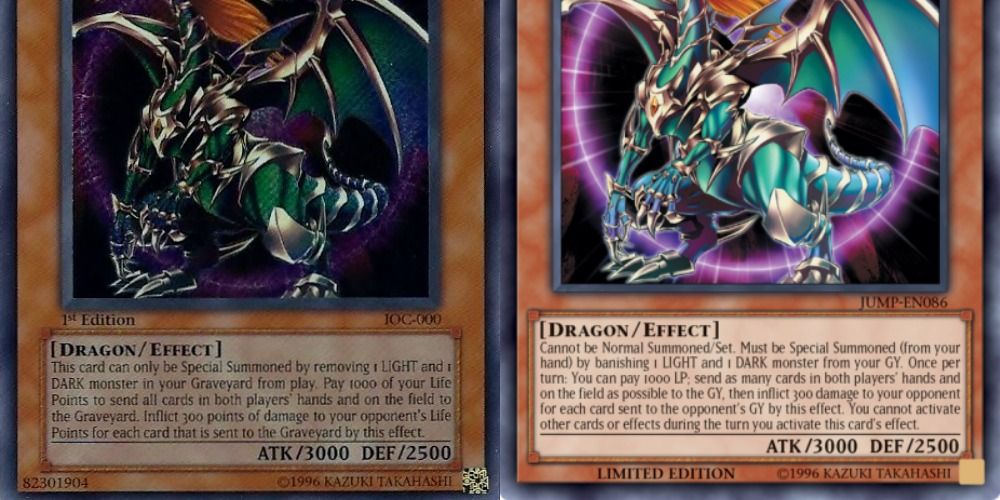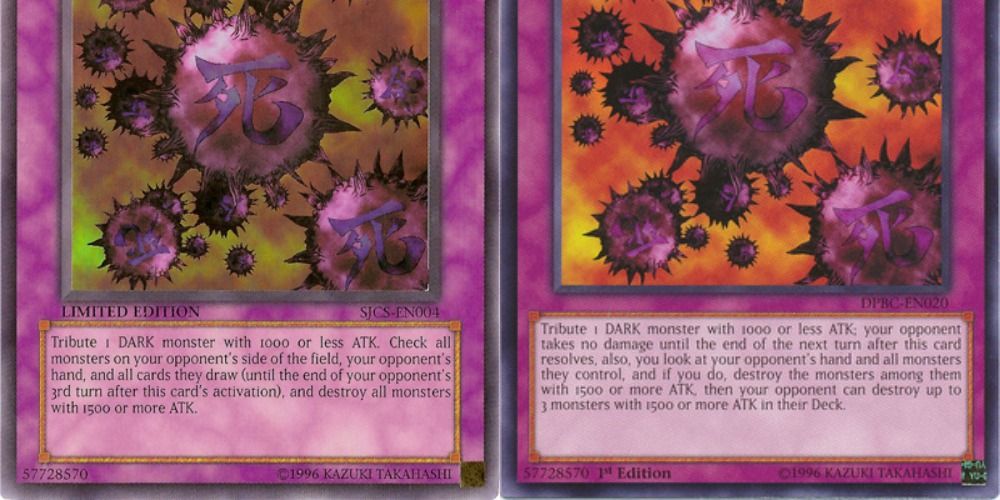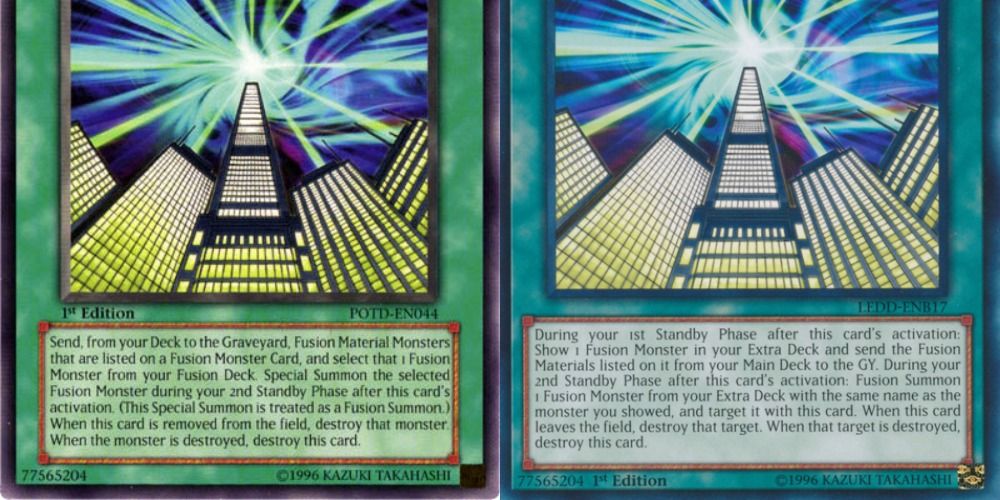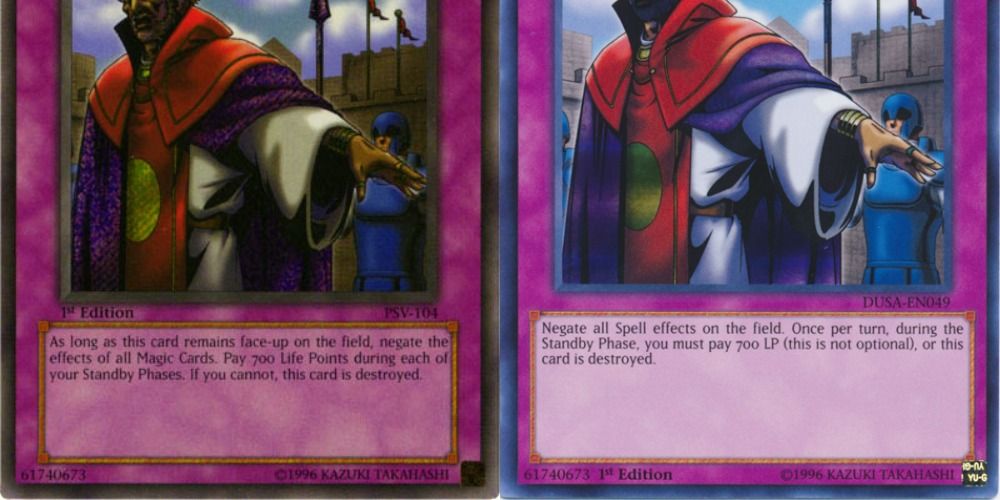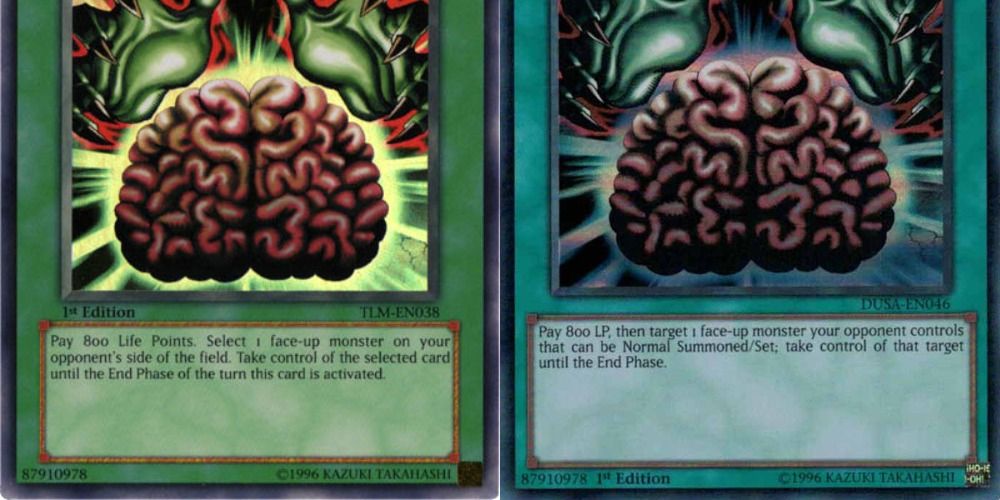Since the release of the Yu-Gi-Oh! trading card game, there have been multiple instances in its lifetime where past cards have been re-released with their card text changed– in particular when the Problem Solving Card Text changes were implemented so players could better understand the cards they were playing.
Another common text change that has been occurring with more frequency in recent years are erratas, where the effect of a card is changed, usually to tone down the effect somewhat and give it a less powerful effect. For the most part, these changes are welcome, as they allow older cards to come back into rotation and off of the Forbidden and Limited list, though this isn't always for the best.
10 Dark Strike Fighter
One of the original broken Synchro Monster cards in Yu-Gi-Oh! was Dark Strike Fighter. It had an effect very similar to a card from Yugi's past, Catapult Turtle, though was in some ways both better and worse. Originally, Dark Strike Fighter was the corner piece in many OTK's that involved attack with a field full of strong, high-level Monsters before sacrificing them to deal the last little bit of damage needed to end the game. With its new card effect, it can only use this effect in the Main Phase 1, before any attacks have been launched, and can only use the effect once per turn, severely limiting its usefulness in even the most dedicated Synchro deck.
9 Sinister Serpent
Sinister Serpent was on the Forbidden and Limited list for a very long time and with good reason. Its effect was simple: during your Standby Phase, you could add it from your Graveyard to your hand at no cost, making it an excellent target for powerful cards that required players to discard a card, such as Phoenix Wing Wind Blast and Tribe Infecting Virus. These days, its effect reads much differently and requires that players banish a Sinister Serpent from their Graveyard during their opponent's End Phase after using its effect to return it to the hand. While it isn't terrible, it's nothing compared to the original effect.
8 Ring of Destruction
A signature card of both Kaiba and Bastion's decks, Ring of Destruction was a lot like Dark Strike Fighter in that it allowed players to make game-winning plays with relative ease. Ever since its most recent errata, however, it is essentially useless for its intended game-ending usage.
With its new effect, it can only be activated during your opponent's turn and it can only destroy a monster with ATK less than the opponent's current LP, meaning it can't be used for a cheap win no matter which way you slice it.
7 Dark Magician Of Chaos
There was a time, long before the days where a player's Extra Deck was arguably more important than their Main Deck, when Dark Magician of Chaos ran rampant and dominated the competitive decks at the time. Its effect to return Spell Cards from the Graveyard to the hand was also at a time where cards like Pot of Greed, Monster Reborn, Raigeki, and Harpy's Feather Duster were all usable. Now, not only does its effect only activate in the End Phase, but there are fewer targets for its main effect to be worth the trouble of summoning.
6 Sangan & Witch Of The Black Forest
For a very long time, both of these cards flip flopped on and off of the Forbidden and Limited list, in particular around the time that Chaos Emperor Dragon – Envoy of the End was seeing major play alongside the likes of Yata Garasu. In recent years, both of their effects have had the same change added to them, in that the Monsters they search from the Main Deck can't use their effects for the rest of the turn, as well as limiting Sangan and Witch of the Black Forest to a hard "once per turn" limit.
5 Chaos Emperor Dragon – Envoy Of The End
Speaking of Chaos Emperor Dragon, it also had a change to its card effect that finally allowed it to come off of the Forbidden and Limited list after years of being stuck there. While it still retains its effect to destroy all cards on the field and in both players' hands– dealing significant effect damage in the process– it now prevents the player from using other card effects during that turn, removing the once devastating Yata Lock from ever becoming a problem again.
4 Crush Card Virus
Another one of Kaiba's signature cards, the errata to Crush Card Virus not only made the card effect worse, but made it advantageous for your opponent. Originally, it would destroy all Monsters on your opponent's field and in their hand with 1500 or more ATK, then destroy any Monster they drew with 1500 or more ATK for the next three turns after it activated.
Now, it retains the original effect of destroying cards in the opponent's hand and field, but also allows them to selectively send cards from their Main Deck to the Graveyard rather than whichever cards they draw. With the amount of decks that rely on card effects activating when sent to the Graveyard, Crush Card Virus is more advantageous for whoever it is used against.
3 Future Fusion
During the earlier days of Yu-Gi-Oh!, there was a particularly devastating deck that used Future Fusion as its center point to summon Chimeratech Overdragon with absurd levels of ATK, and has been used in many other Fusion centric decks like Elemental HEROs over the years with equal degrees of success. Fast forward a few years to the present and Future Fusion is nowhere near as powerful, forcing players to wait one turn before using its effect to send Monsters from the Main Deck to the Graveyard, meaning it is less useful as a mass Foolish Burial than it used to be.
2 Imperial Order
Imperial Order is one of those cards from the early Yu-Gi-Oh! era when cards had ridiculously powerful effects with no drawback – see Pot of Greed and Monster Reborn – with Imperial Order being one of those. Its ability to negate all Spell Card effects is detrimental to so many strategies that it wasn't able to come off of the Forbidden and Limited list until it had its card effect changed, where now players are forced to pay the 700 LP cost to keep it on the field, and can't simply choose not to in order to get rid of it and allow them to use Spell Cards on their turn. While it is still very powerful and rightfully Limited, this one change made it far less broken.
1 Brain Control
Like other Monster stealing cards, Brain Control spent a long time on and off of the Forbidden and Limited list, though this time it will most likely stay off of the list for good, since its recent errata has made it borderline useless in current Yu-Gi-Oh!. Where it once could target any Monster your opponent controls and take control of it for a turn, it now can only target Monsters than are capable of being Normal Summoned. With the heavy emphasis on the Extra Deck, very few Normal Summoned Monsters stay on the field long enough for Brain Control to work.

